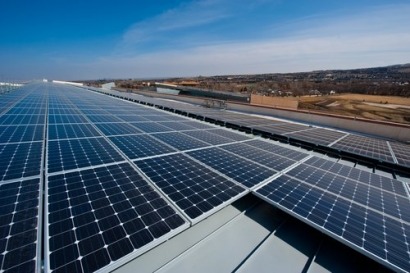
The collaboration is the result of a memorandum of understanding between the German Helmholtz Association and the US Department of Energy’s National Renewable Energy Laboratory (NREL).
The agreement identifies several key solar energy topics to explore for joint research cooperation.
In addition to working together to synthesize and characterize novel materials in the two aforementioned areas, the researchers will also develop and use fast imaging techniques to help characterize thin-film materials on the micrometer to nanometer scale, and to characterize in situ growth processes.
“This agreement promises to advance the state of knowledge and the development of new materials and technologies that will form the basis of next-generation solar cells and solar fuels,” NREL Director Dan Arvizu.
The research teams will be comprised of scientists from the NREL and the three research institutes within the German Helmholtz Association – the Research Center Jülich (FZ Jülich), the Helmholtz Center Berlin (HZB), and the German Aerospace Center (DLR).
They’ll seek a fundamental understanding of grain boundary/interface passivation in thin-film silicon and search for the potential and limits of wide band-gap thin-film solar cells.
Thin films, made of copper, indium, gallium, selenium and other emerging materials, could potentially replace silicon as the most efficient materials in next-generation thin-film solar arrays.
To measure performance and reliability of solar cells and modules, the scientists will use electroluminescence, photoluminescence and thermography. They will also investigate the stability of solar cells by subjecting them to high temperatures and light exposures.
New device structures and lower cost catalysts will also be investigated for the generation of hydrogen in photocatalytic solar fuel generation.
In one area, the work builds on an MOU NREL signed two years ago with one of the German organizations, DLR, which involved developing standard test methods to quantitatively assess the reflectance and durability of solar mirrors used for concentrating solar power (CSP) systems.
The MOU also called for round robin testing of commercial reflector samples and commercial parabolic trough receivers. In the new MOU, this work will be extended to understanding fundamental mechanisms for soiling rates on CSP mirrors
For additional information:
US Department of Energy’s National Renewable Energy Laboratory

